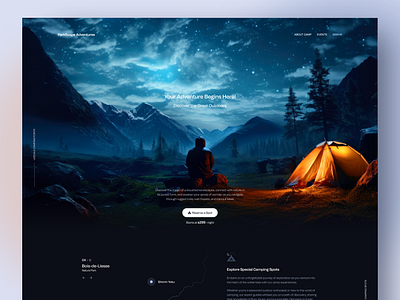Imaginative Web Layout Solutions for Modern and Engaging Sites
In the world of web design, the search of modern-day and interesting options has ended up being increasingly vital for businesses aiming to capture user interest. By incorporating bold color schemes, interactive aspects, and responsive designs, designers can create experiences that not just resonate with users however also enhance brand identity.
Welcoming Bold Color Design
In internet layout, the critical usage of vibrant color pattern can dramatically boost customer engagement and brand identification. By employing dynamic shades, designers can develop aesthetically striking sites that capture focus and promote an unforgettable experience. A well-chosen color combination not only mirrors a company's values but likewise evokes details feelings that can influence customer actions.
Bold shades can be utilized to direct users' focus to essential components such as contact us to action, improving conversion rates. Using contrasting shades for buttons and web links can make these aspects stand out, motivating users to communicate more conveniently. A natural shade scheme throughout the web site reinforces brand recognition, creating a sense of familiarity and trust fund amongst site visitors.
Nevertheless, it is crucial to stabilize vibrant colors with appropriate white room to prevent frustrating individuals. Reliable use typography additionally matches vibrant shades, making certain readability while keeping aesthetic charm. Inevitably, welcoming bold color pattern in internet layout not just elevates visual top quality yet also plays an important duty in achieving critical organization objectives, making it an important consideration for modern-day internet development.

Utilizing Interactive Components
Interactive aspects are important in modern-day web layout, as they substantially enhance customer engagement and create a much more vibrant browsing experience. By including functions such as computer animations, hover results, and clickable aspects, websites can urge users to discover material more extensively and return for future check outs.

Micro-interactions, such as refined computer animations when a button is clicked or a form is submitted, can likewise improve the individual experience by supplying instant responses. These little details can make the web site feel more responsive and alive, promoting a sense of connection in between individuals and the site.
Furthermore, gamification components, such as rewards for finishing certain activities, can motivate users to engage with the web content more deeply. By attentively incorporating these interactive elements, internet designers can develop a memorable and appealing on-line experience that reverberates with users and urges them to return.
Executing Receptive Layout
Applying receptive design is essential in today's multi-device landscape, guaranteeing that internet sites offer an optimal viewing experience throughout numerous screen dimensions. As users increasingly access the web via smartphones, tablet computers, and desktop computers, a one-size-fits-all method is no much longer viable. Receptive design enables for seamless navigation and interaction, adjusting design and web content to fit the tool being used.
Key principles of receptive layout include liquid grids, adaptable images, and media inquiries. Liquid grids use family member systems, such as portions, as opposed to taken care of pixels, making it possible for components to resize proportionately. Flexible images range within their containing elements, avoiding overflow and maintaining visual integrity. Media inquiries facilitate the application of different designs based upon the tool's characteristics, such as width, height, or resolution, allowing designers to customize the customer experience properly.
Moreover, responsive design boosts SEO efficiency, as internet search engine prefer mobile-friendly websites. By carrying out receptive style, organizations not only boost user satisfaction and involvement however likewise enhance their reach in a competitive electronic landscape. As technology proceeds to develop, adopting responsive layout has actually ended up being a fundamental practice for any type of modern and engaging web site.
Integrating Multimedia Material
Multimedia content plays a vital function in creating appealing and dynamic web experiences that capture users' interest and improve understanding. By incorporating text, images, audio, and video, websites can supply a richer story that interest numerous discovering styles and choices. This assimilation not just boosts individual engagement yet additionally help in sharing complex ideas succinctly.
Incorporating high-grade pictures and infographics can damage up textual web content, making it extra useful reference digestible. Similarly, video clip tutorials and discussions can offer thorough insights that static material may not totally communicate. Audio elements, such as podcasts or history songs, can additionally enhance the atmosphere of a site, creating a more immersive experience.
Additionally, the calculated use click here for info multimedia can improve search engine optimization performance, as search engines prefer diverse material types, boosting presence. It is essential to make certain that multimedia elements do not impede page lots times, as this can lead to customer disappointment. By balancing multimedia integration with performance considerations, web developers can develop visually appealing and functional websites that reverberate with individuals, cultivating a much deeper connection and encouraging return gos to.
Prioritizing Customer Experience

To accomplish an optimum user experience, designers have to concentrate on numerous key concepts. Receptive style is vital; internet sites should adapt seamlessly to different gadgets and screen sizes. This accessibility ensures that customers can engage with content despite their picked system. Second of all, clarity in layout and pecking order is vital. Clear calls to activity, understandable typography, and organized web content overview customers, reducing cognitive tons.
Ultimately, prioritizing UX not just elevates user contentment yet likewise drives interaction and conversion rates, making it an essential aspect of contemporary internet design strategies. By placing customers at the facility of style efforts, web sites can develop long lasting, favorable impressions that urge return brows through.
Conclusion
To conclude, modern-day website design remedies that stress vibrant shade systems, interactive elements, responsive style, and multimedia web content considerably enhance individual interaction and satisfaction. Prioritizing individual experience through clear designs and continuous comments additionally adds to boosted conversion prices. By adopting these strategies, websites can properly astound visitors and reinforce brand identity, inevitably resulting in a much web link more vibrant and engaging on the internet visibility. The assimilation of these design principles is vital for accomplishing modern website design purposes.